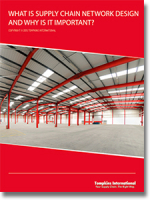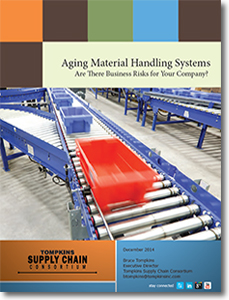Aging Material Handling Systems
Today’s companies are strongly considering advanced technologies in their decisions to replace or upgrade material handling systems and requirements.
Are There Business Risks for Your Company?
Many material handling systems used today are beginning to show their age.
What were once considered brand new systems are now deteriorating and fighting to stay current.
In a recent survey to retailers, manufacturers, wholesalers, and third‐party logistics (3PL) firms, Tompkins Supply Chain Consortium posed the question to find out if this assumption is valid.
Survey questions focused on:
- The age of companies’ material handling systems
- How many systems are more than 15 years old
- How companies determine when their systems have reached their useful lives
- How informed leaders are about the state of their material handling systems
- How companies determine when systems are ready for replacement or upgrades
- The extent that technology system advancements plays in the determination of replacements or upgrades
- The market and functional changes used to justify the replacement of aging systems
Survey Data
The survey asked respondents about the year they installed their oldest functioning material handling system. As expected, some material handling systems were installed just a year or two ago, while another was more than 30 years old. The average oldest functioning system was installed 15.3 years ago; the median age is 15 years. This means that approximately 35% of all respondents have systems older than 20 years.
To gain more insight into the consequences of age on material handling systems, Tompkins Supply Chain Consortium posed several questions to distribution operations expert Dale Pickett (Principal, Tompkins International). Pickett indicated that he would be “continuously looking for spare parts and have many made for equipment that is 20 years old.” He also thought hiring additional people to maintain and manually run the system was likely. “For smaller distribution networks, the risk could be enormous if excessive downtime occurred,” he said.
These statistics indicate that many of today’s material handling systems have considerable age to them, and they may be a source of operational concern going forward. In general, retailers had slightly older material handling systems than other industries, but all industries had the same general length of service of approximately 15 years. How greatly does this place your business at risk of a short‐term or long‐term shutdown?
What’s Related




Favorites





